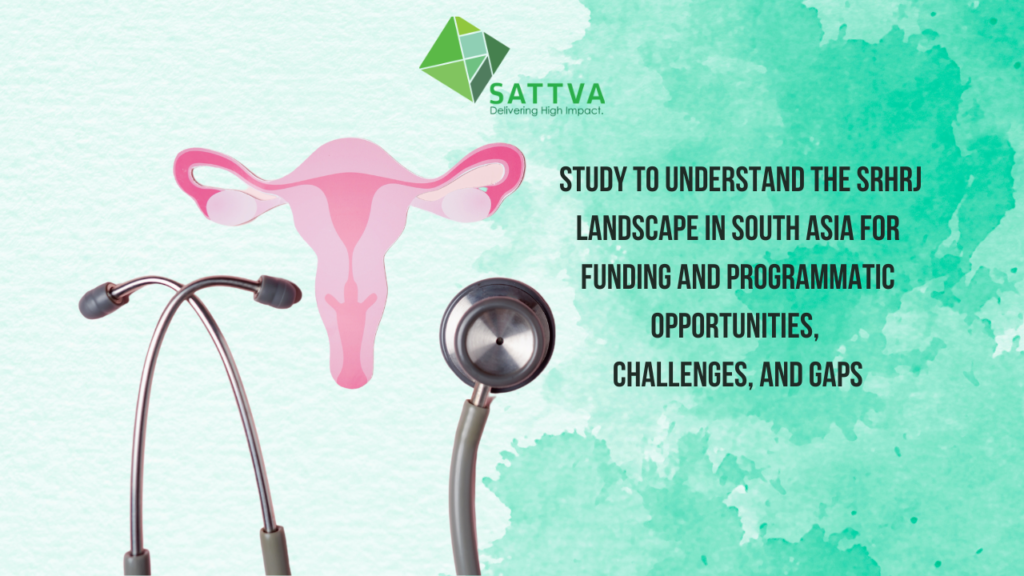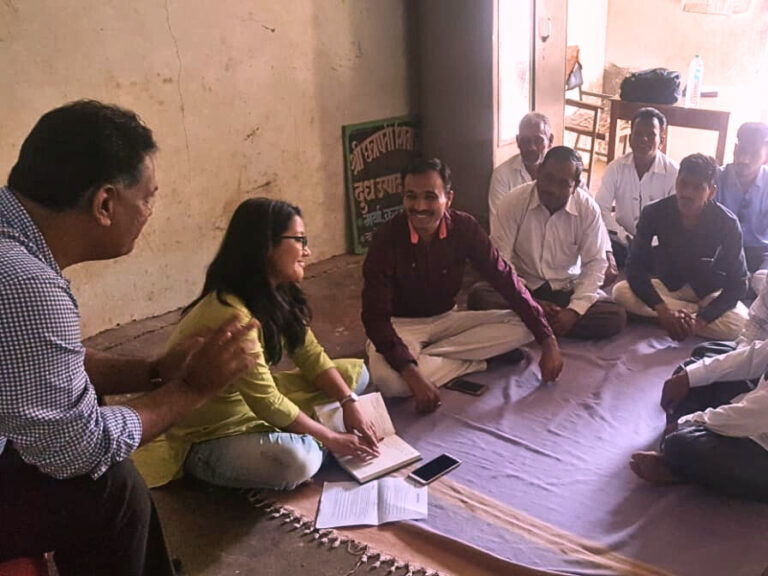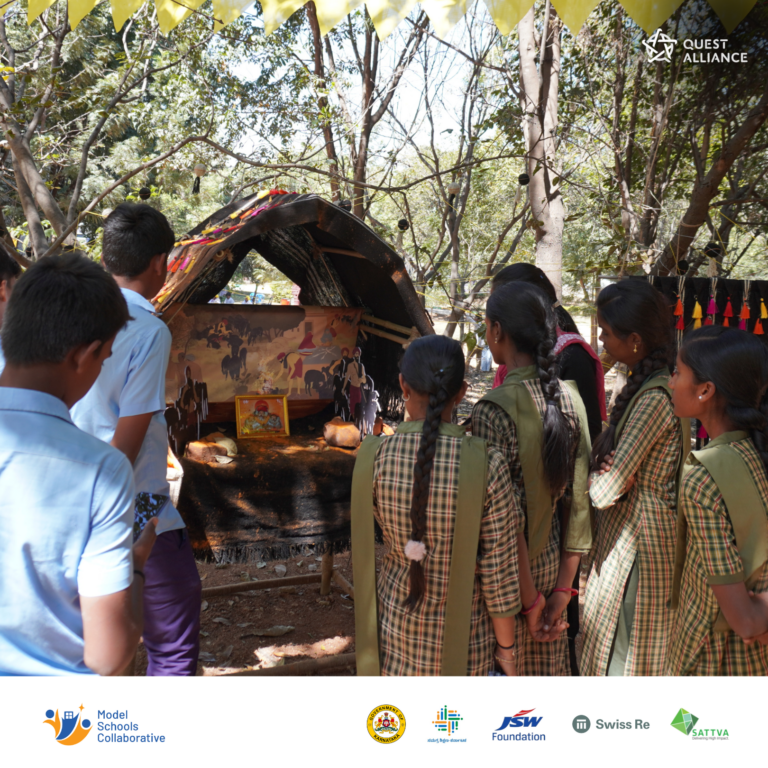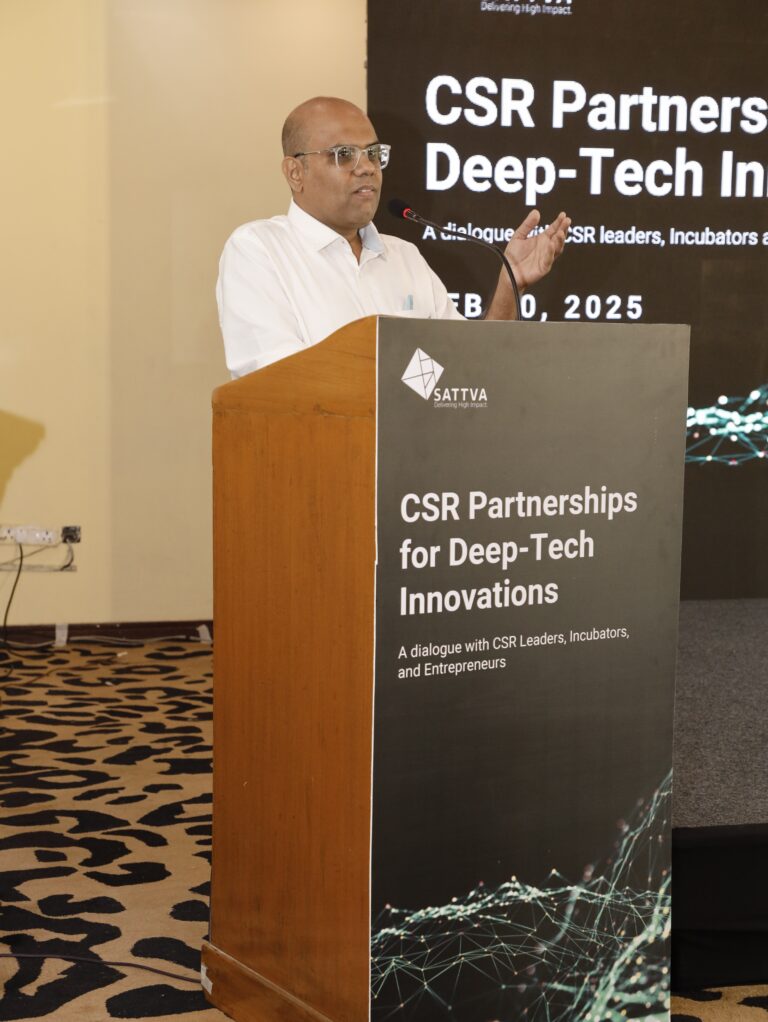In 2022, a leading foundation commissioned Sattva to explore the sexual and reproductive health, rights, and justice (SRHRJ) landscape across five countries in south Asia — Nepal, Sri Lanka, India, Bangladesh and Indonesia. This would help guide their Reproductive Health Programme strategy in the region, as well as support them to identify related opportunities, challenges, and gaps.
Situational Analysis of the study:
The study explored the current performance across SRHRJ outcomes, mapped across key indicators in the fields of Family Planning (FP), Comprehensive Abortion Care (CAC) and Adolescent Reproductive Health (ARH) & Comprehensive Sexuality Education (CSE).
The Study included the following Areas of Inquiry
- The current status and policy provisions toward awareness, access, affordability and acceptability of sexual and reproductive health services across chosen countries.
- The gaps and challenges/barriers related to the above factors.
In this article, we present key insights and the situational analysis gathered from secondary research in the fields of FP, CAC and ARH and CSE from the study.
- Family Planning
Efforts towards achieving SDG 3 — Good Health and Wellbeing across the five countries are stagnating. We map performance related to SDG 3 Family Planning targets.
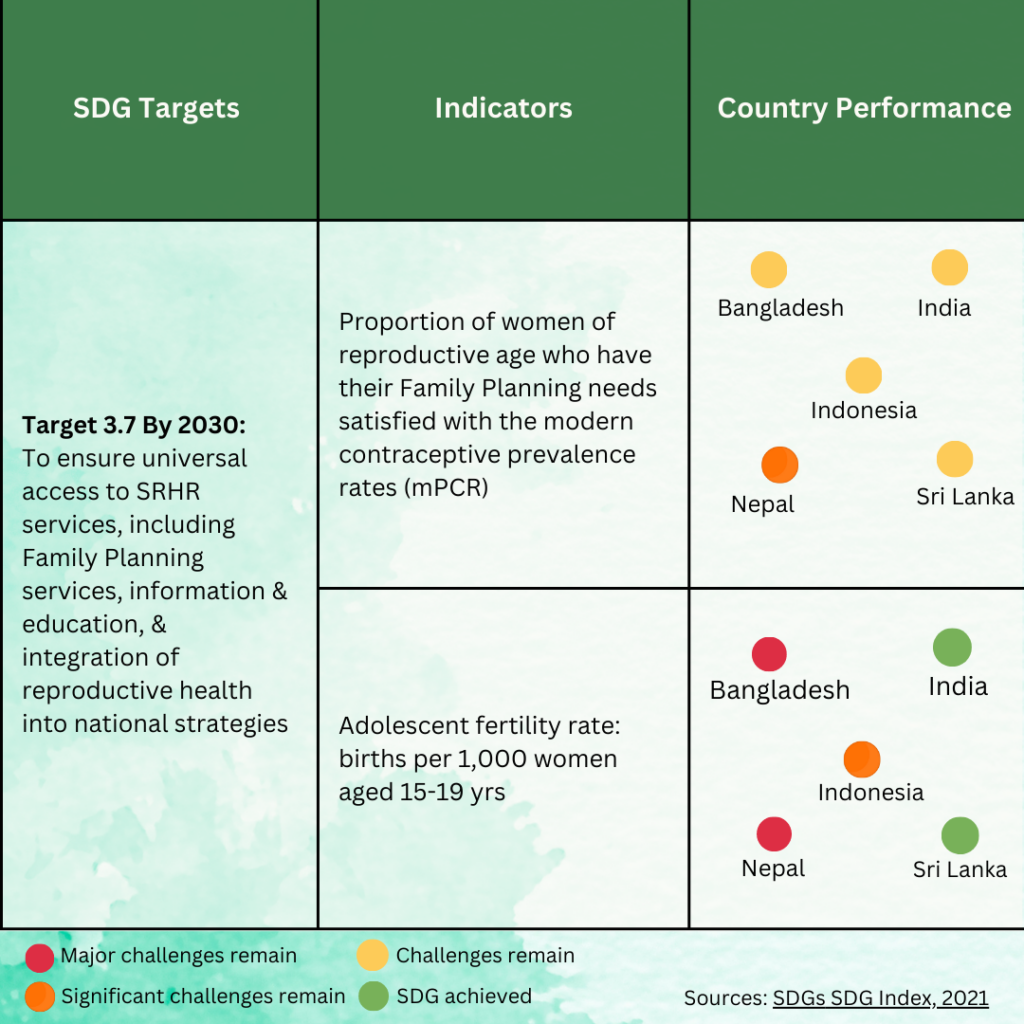
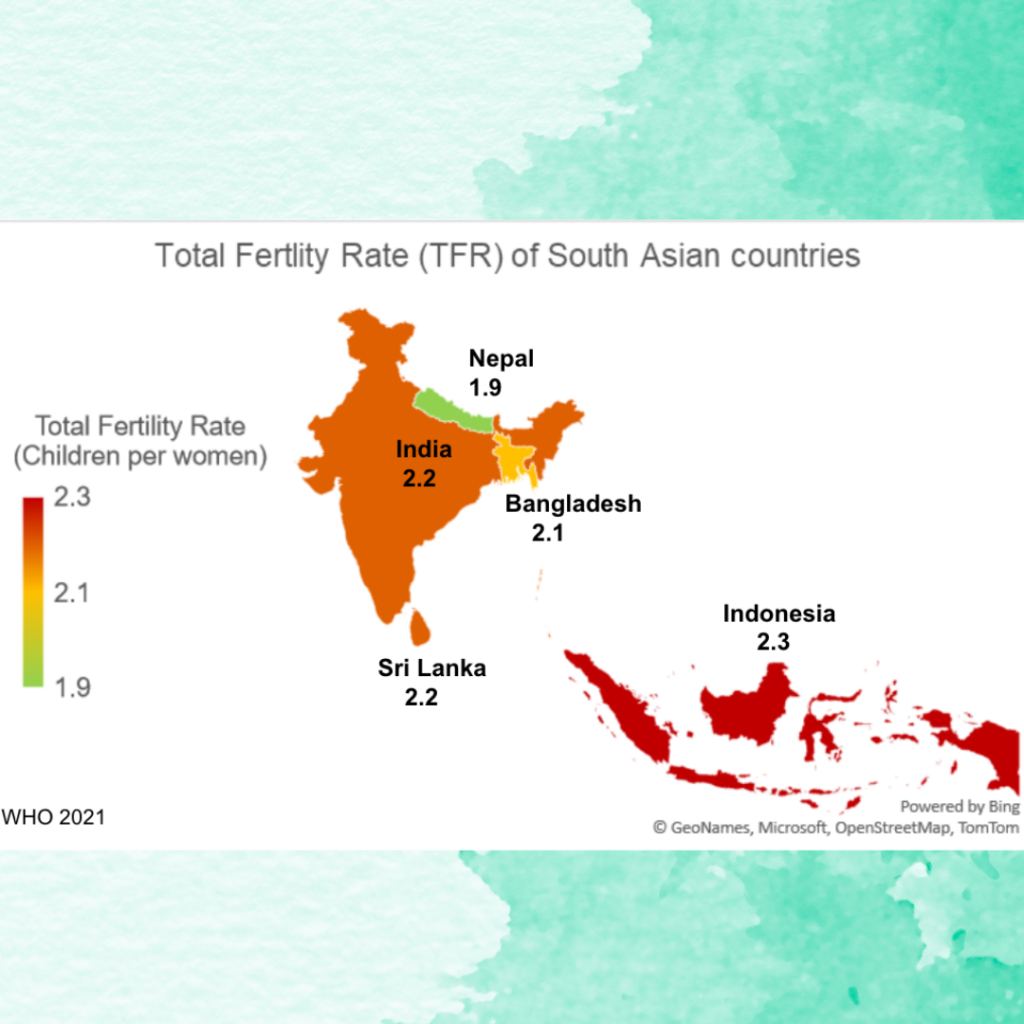
TFR was highest in Indonesia and lowest in Nepal
Nepal and Indonesia had the highest and lowest mCPR, respectively
Bangladesh, India and Sri Lanka demonstrated similar trends in TFR and mCPR
In Indonesia — age, parity, education, spouse’s education, and access to information influence low mCPR. Further education on FP, contraception and ideal number of children is needed here.
Declining TFR and increased mCPR in Nepal have been attributed to increased education levels, migration induced spousal separation, increased legal age of marriage, progressive abortion laws and contraception availability.
Heavy burden of contraception continues to be on women across all countries.
However, female condom usage is almost non-existent in all countries, except India with a consumer base of just 0.10% (of all FP methods used).
All five countries show a heavy burden of LAPCM contraception — such as sterilisation — on women, with a slightly higher prevalence of male sterilisation in Nepal.
There have been only minimal changes over the past 7 years in the percentage of women using modern contraceptives (52% in 2011, 54% in 2014, and 52% in 2017-18), across the countries.
2. Comprehensive Abortion Care (CAC)
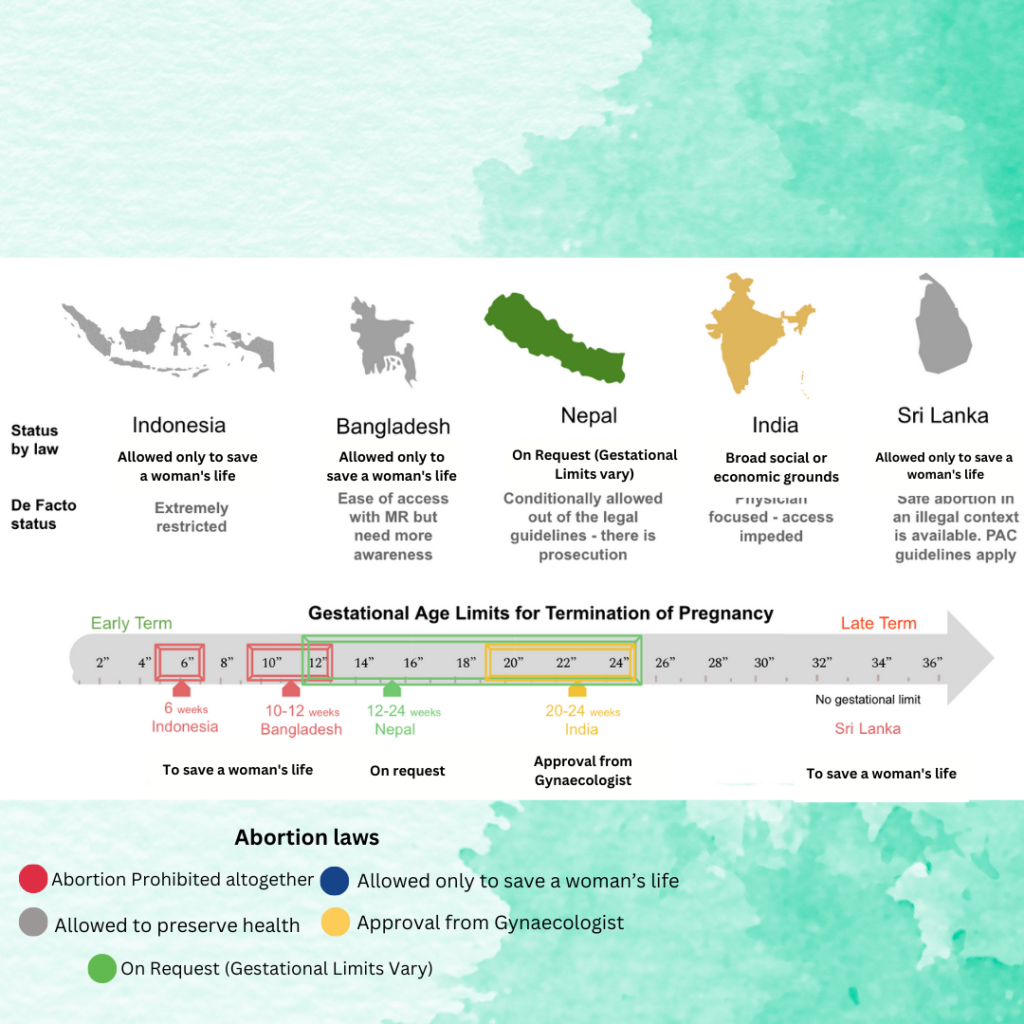
Abortion through medication is the most popular method across countries.
Under life saving circumstances, the abortion law in each country highlights a gestational age limit to abortion.
Despite restrictions on abortion in Bangladesh, Indonesia and Sri Lanka, women do access abortion services through various means — sometimes clandestine but more popularly through medication (MRM or MA) that does not fall under the purview of the law.
A deeper investigation of access to abortion services across five countries shows rural and remote geographies have limited to no access to abortion or post abortion care services.
Additionally, young and unmarried women are deprived of the access to abortion due to socio-cultural stigma.
Data from all five countries demonstrates either under reported or outdated data.
The severity of abortion laws (or lack thereof) influences what data can be collected.Overall, across countries, there is a dearth of data on abortion and available data is either underreported or outdated. Only India and Nepal had the latest data available whereas data from other countries was outdated.
3. Adolescent Reproductive Health (ARH) & Comprehensive Sexuality Education (CSE)
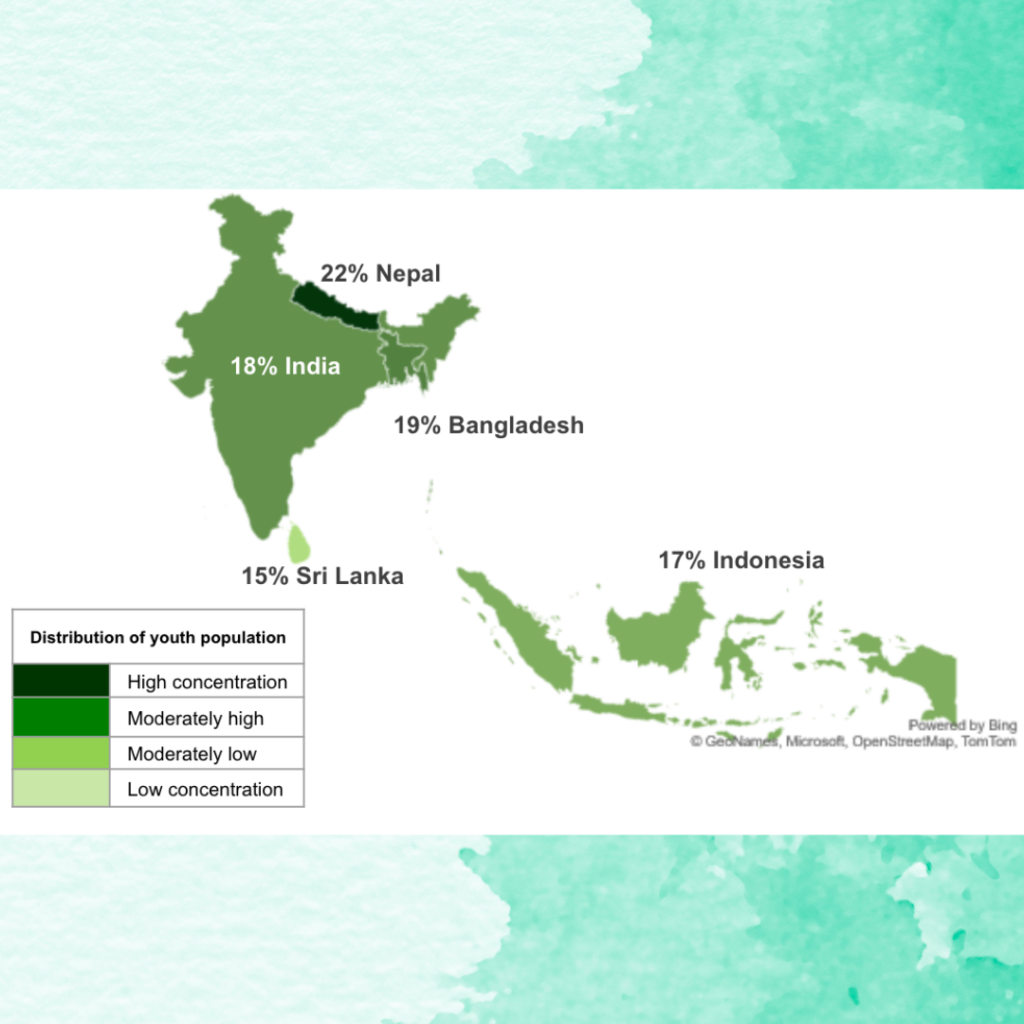
While all five countries have similar % of adolescent populations, their SRHR landscapes vary.
Adolescent population % in India shows regional variation ranging from 21% – 25%, with the density being greatest in the north eastern states. Data shows that while 2.7% pregnancies among adolescents end in abortions, 78% of all adolescent abortions are unsafe. Legal frameworks such as the POCSO Act and PCPNDT Act, and socio-cultural barriers hamper access to safe abortions. Hence there is a greater demand for Sexual and Reproductive Health services in this region, which also sees high prevalence of child marriages.
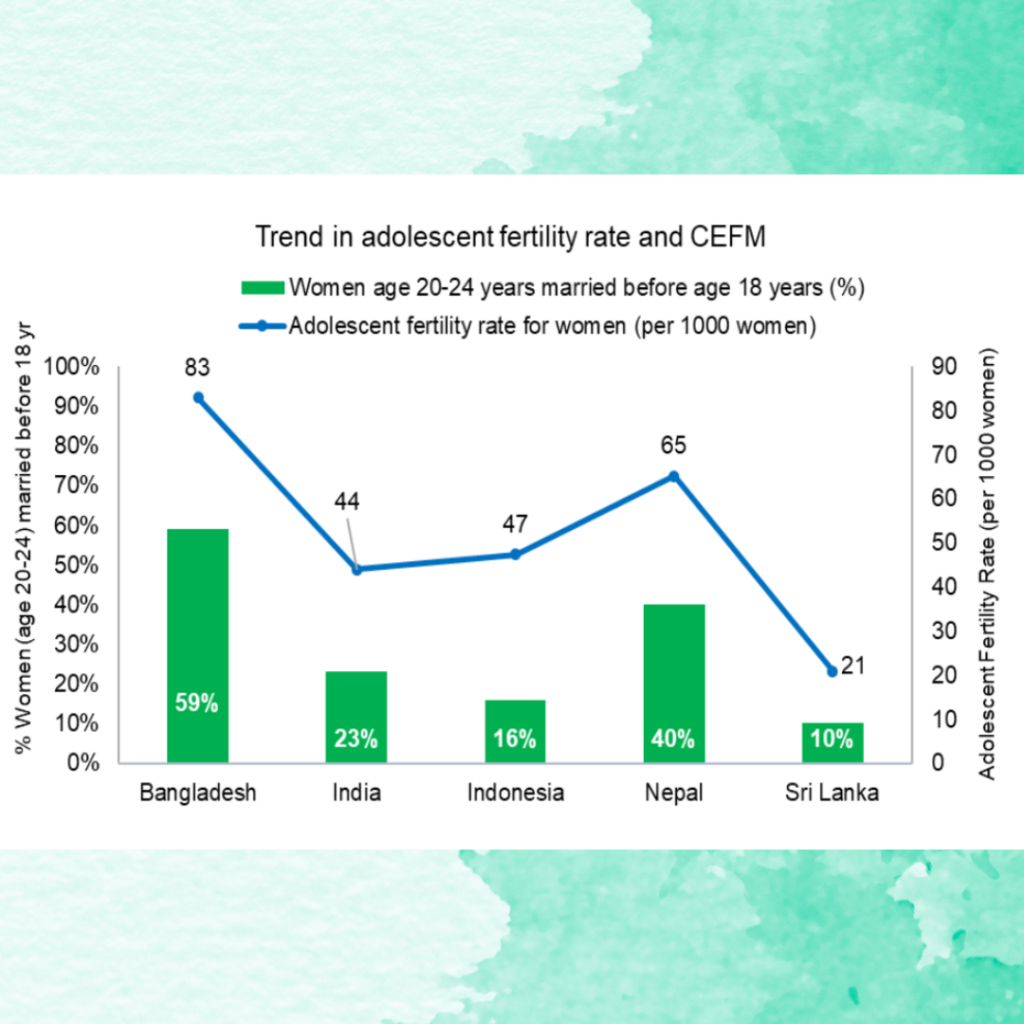
c. Bangladesh and Nepal display the highest percentage of Child, Early and Forced Marriage (CEFM) and adolescent fertility rates.
d. In Indonesia, registration of CEFM is low and therefore underrepresented in public data.
e. Bangladesh and Indonesia have the highest prevalence of mCPR* use among married adolescent women in South Asia
f. Apart from India, none of the countries acknowledge the need for contraception in unmarried women and therefore there is absence of relevant data from these countries.
g. In terms of policies, Bangladesh and Srilanka have policies in place that aim to provide adolescents with information, knowledge and access to health services. However, none of the five countries possess comprehensive policies that ensure the rights of adolescents to sexual and reproductive health.
h. The Government has not been able to implement CSE in its true sense in any of the 5 countries due to cultural and religious opposition.
i. The CSE landscape in a majority of the countries does not meet the UNFPA standards.
j. The CSE strategies and programmes of the other four countries continue to prioritise awareness and access to service delivery rather than — in line with the UNFPA recommendations — to prioritise agency, human rights, gender and skill building for adolescents.
Do you have any queries related to this study, or want to explore work with us along similar lines? Write to us at impact@sattva.co.in
Sources:
Reproductive Health Journal 2022 , Guttmacher 2016 , DHS 2019, WHO 2021
Center for Reproductive Rights 2020, Reproductive Health 2012
Determinants of contraceptive use among married women in Indonesia, 2020
